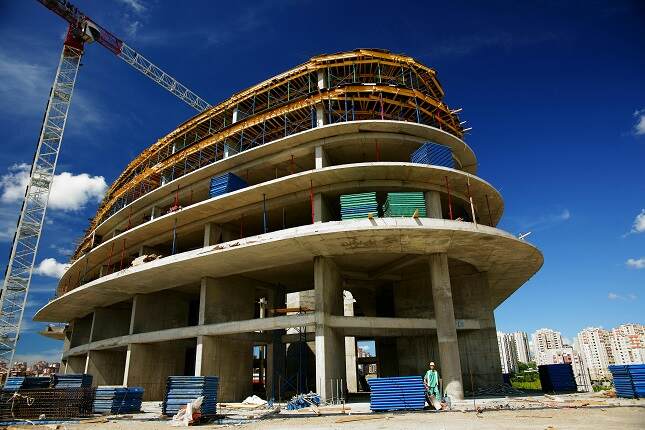As the country moves towards large-scale infrastructure upgrades, the need for new builds of both residential and commercial kinds is surging. Experts predict that by 2027, the overall value of the construction industry, across residential, non-residential, and non-building segments, is set to touch $2.24 trillion.
The numbers look great, and so do the growth projections. But beneath all that momentum lies a looming problem. Keeping up with rising demand often leads to rushed decisions, cost overruns, and miscalculations. Add to these already high expectations the rising cost of engineering and materials, and the pressure starts to build from all sides.
Project timelines stretch, quality takes a hit, and margins shrink silently. And without a close look, it’s hard to trace where the money’s actually leaking. Sometimes, it’s the small oversights that bleed a project dry. Today, we attempt to pinpoint areas where your margins might be disappearing.
Equipment Downtime and Maintenance Gaps
The majority of construction schedules are built around the assumption that machines will work when needed. Reality tells a different story. Equipment breaks down at the worst possible moments, and repair costs shoot up when work stops mid-project.
Meanwhile, construction wages have surged to match both rising demand and general inflation, climbing an average of 20% from 2021 to 2023. This means every hour of crew downtime now costs significantly more than before.
When machines fail, workers stand idle while still drawing these higher wages, creating a double financial hit. Contractors then scramble to rent replacement equipment at premium rates, often paying rush delivery fees on top of inflated rental costs.
To stay on schedule, contractors sometimes skip preventive checks to buy a few extra hours. But this creates even more expensive problems down the road. A single hydraulic failure can delay an entire foundation pour, triggering cascading delays that impact every subsequent phase of the project.
Compromise With Material Quality
Rapidly increasing prices of construction raw materials are one of the core reasons why construction business owners are forced to make tough decisions between quality and cost. US construction material prices jumped 1.4% in January 2025 alone, adding pressure to already tight budgets.
While choosing cheaper alternatives sounds like smart cost management, in theory, the reality is starkly different and often more expensive in the long term.
For instance, choosing low-grade rebar to save a few thousand upfront can lead to cracks and structural weaknesses down the line. Fixing those issues after the fact drains far more from your budget than using the right material in the first place.
Poor insulation choices create another major drain on budgets. Contractors skip thermal break materials in favor of basic options, which fail to prevent energy loss and thermal bridging. Quality thermal break materials can help projects achieve LEED certification, adding immense value to the property.
According to Fabreeka, proper thermal breaks remain impermeable to water and solvents, making them ideal for sites exposed to heavy weather or extreme conditions.
Intentionally skipping these materials can lead to severe reputation damage when buildings fail to meet performance standards, forcing costly retrofits that eliminate any initial savings while damaging client relationships for future projects.
Subcontractor Communication Breakdowns
Imagine a scenario where your electrical crew finishes running conduit through a wall, only to discover the plumbing team needs that exact same space for their main water line. Nobody talked to anybody, and now both teams have to rip out their work and start over.
This kind of mess happens more often than anyone wants to admit. HVAC contractors show up ready to install ductwork, but find steel beams blocking their planned routes because the structural drawings never made it to the mechanical team.
Suddenly, what should have been a two-day install becomes a week-long headache involving engineers, change orders, and crews standing around getting paid to wait.
Then there’s the damage factor – one trade accidentally cuts through another’s finished work, and now you’re paying for repairs plus the original installation twice. Project managers spend entire days in meetings trying to sort out these conflicts instead of actually managing the project.
The worst part is how these communication failures poison relationships between trades, making everyone more defensive and less willing to collaborate on future jobs.
Permit and Inspection Delays
Building departments operate on their own schedules, not construction timelines. The situation has worsened recently, with building permits across the United States declining by 2%, reaching their lowest levels since June 2020.
This slowdown means permit applications now sit in review queues even longer than usual, sometimes for weeks beyond what anyone planned for.
Meanwhile, your carrying costs keep running – insurance, financing, site security – all while nothing gets built. Then comes inspection day, and if something fails, work stops completely until you can get everything fixed and schedule another inspection.
At this point, your crews either sit around doing nothing or get pulled to other jobs, which completely messes up the workflow you spent weeks planning. On top of that, equipment rentals don’t pause just because the inspector found an issue with your electrical rough-in.
Naturally, delivery schedules get scrambled, and suppliers start charging rescheduling fees or demanding you find temporary storage for materials that can’t sit on site. As delays pile up, clients get frustrated when completion dates keep slipping, and subcontractors start charging extra for all the schedule changes.
Worse yet, you miss your weather window because of permit delays, and outdoor work becomes much more complicated and expensive.
Protecting Your Bottom Line
Construction is full of moving parts, and not all costs show up clearly on a spreadsheet. Some losses build slowly, hidden in everyday decisions. But that also means they can be fixed with steady, thoughtful changes.
Recognizing these patterns early gives you complete control over the financial health of your projects. Once you have figured out where and how your profit is leaking, every decision becomes more strategic and less reactive.







































